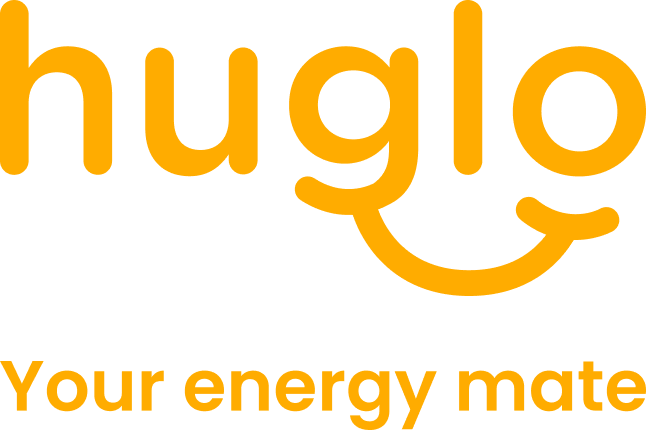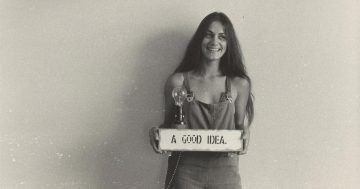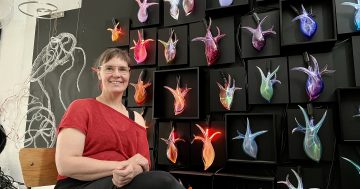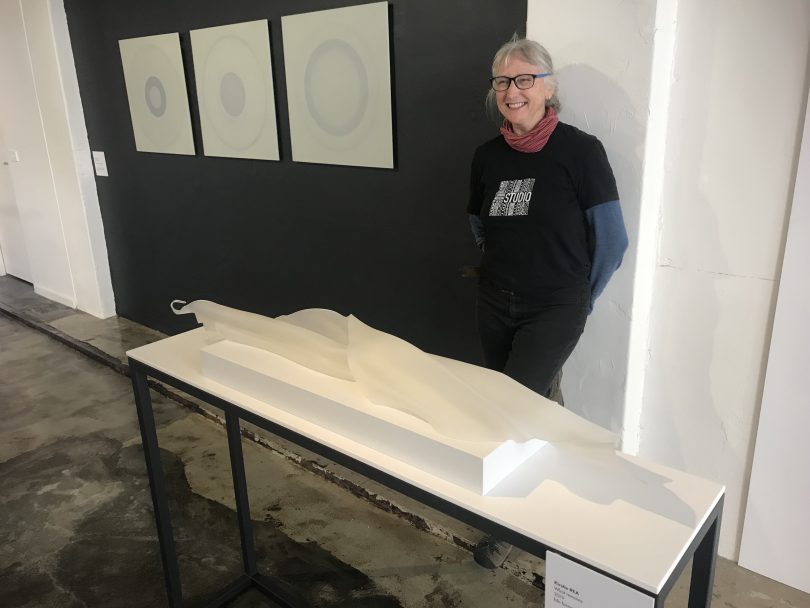
Kirstie Rea with her winning piece. Photos: Cass Proudfoot.
Canberra glass artist Kirstie Rea has taken out the inaugural Klaus Moje Glass Award national art prize. There is an enormous depth of glass talent in Canberra, and it all started when Klaus Moje AO set up the School of Art glass workshop.
Rea learned her craft from Moje, when glass art was a new concept for Canberra. Her winning piece and the other shortlisted works can be seen at the new Thor’s Hammer gallery on Mildura Street in the old Tip Top factory in Fyshwick.
The luminous glass art contrasts beautifully with the industrial gallery space, scratched concrete floor and all. The two-metre high bright red and blue glass work by Moje himself at the entrance to the show sets the scene for a stunning exhibition.
Klaus Moje (1936-2016) was a huge figure in the glass world and brought kiln-formed glass to prominence in Canberra and Australia. When he arrived in 1982, art glass was not mainstream and blown glass was more common than kiln formed.
Back in 1987, Rea was one of his early students at the Canberra School of Art and Design, going on to become a teacher there herself. Between them, she and Moje taught many of Canberra’s glass artists who have gone from strength to strength. Canberra’s glass talent is demonstrated with many Canberra region artists among the 18 finalists – as well as the winner.
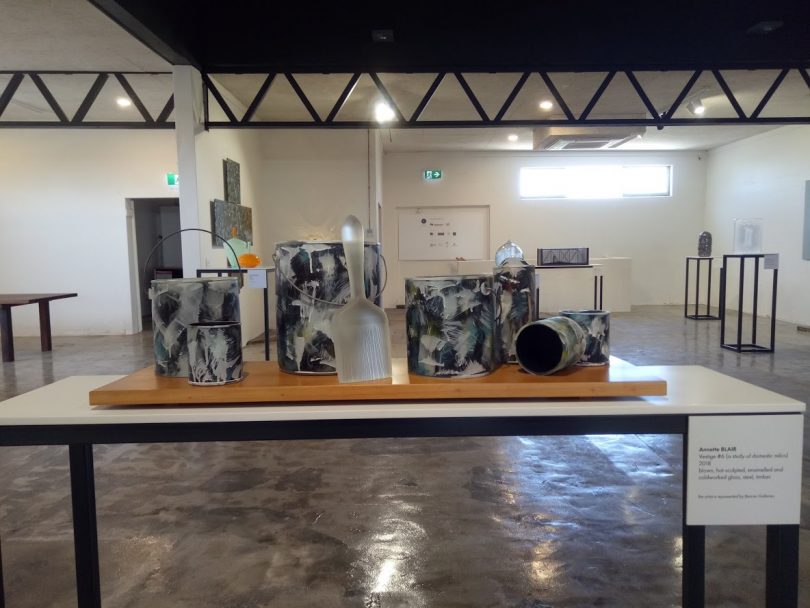
Annette Blair’s paint pots and spraycans demonstrate the flexibility of the form.
These days Canberra is a hub for glass art in Australia and is even known internationally for producing outstanding glass artists. The Canberra Glassworks in Kingston draws the glass artists in the region together and keeps graduates in the area. Moje was involved in setting up the Glassworks and Rea later became the Creative Director.
Many professional glass artists have learned from Moje and Rea, and many have remained in Canberra to make work at the Glassworks. So Canberra is a fitting location for this glass award. And the entries are of an incredibly high standard.

Holly Grace’s teapot forms in glass glow in the Klaus Moje prize exhibition.
This exhibition really showcases the different things artists can do with glass. Holly Grace’s teapot form glows and reflects dark photographic images added with glass enamel.
In contrast, Emma Varga’s glowing white work Virtual Garden – White Corals uses clear glass, with natural white forms branching out from the centre. This piece has a sting in the tail, as white coral is dead coral, preserved, but not alive.
Even among the Canberra artists the variety is huge. Annette Blair has made a series of battered paint pots and a brush entirely out of glass. Jeremy Lepisto has entered a highly detailed and exact shipping container. Harriet Schwarzrock has used scientific glass and a neon tube to create a lifelike hanging form.
Louis Grant has also used neon and shocking pink glass tiles in his work Queer (vulnerability). And Ben Edols and Cathy Elliot have worked together on a pale green vessel, lighter than air and carved with fat round waves.
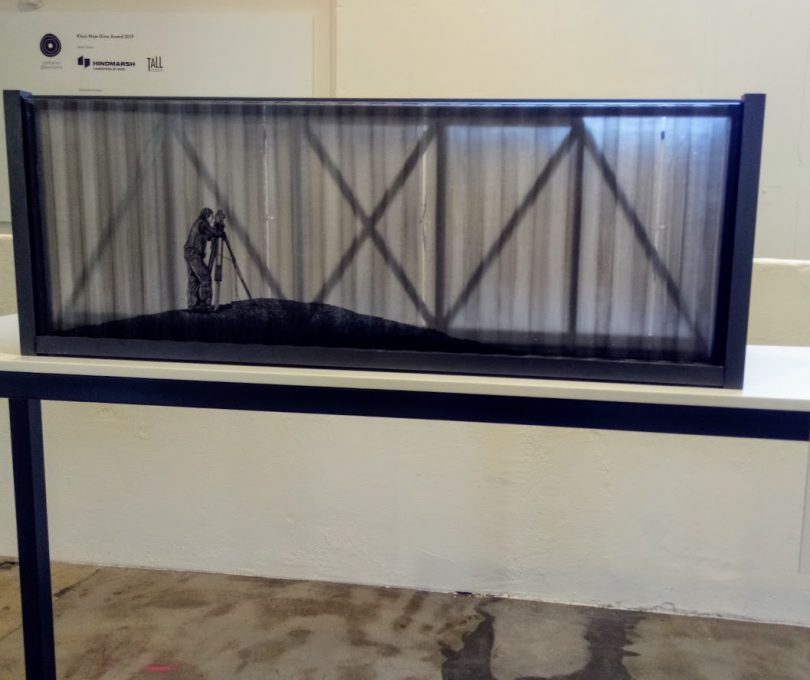
Jeremy Lepisto’s work The Span, from his container series.
Back in the day, Moje taught his students exciting new ways of kiln-forming glass in moulds using dramatic geometric colour. Award-winner Rea has taken her glass in a new direction, focusing on folds and drapes. Soft curves full of space and air suggest memories of what was once present.
Moje taught his students to constantly strive for new ideas and explore them to the full. This is something Rea has done throughout her career, and she is a deserving winner of the first Klaus Moje Glass Art Award.
The exhibition is showing at The Mixing Room Gallery, Thor’s Hammer, 10 Mildura St, Griffith, Monday to Saturday, 10:00 am to 4:00 pm until 12 October 2019.
